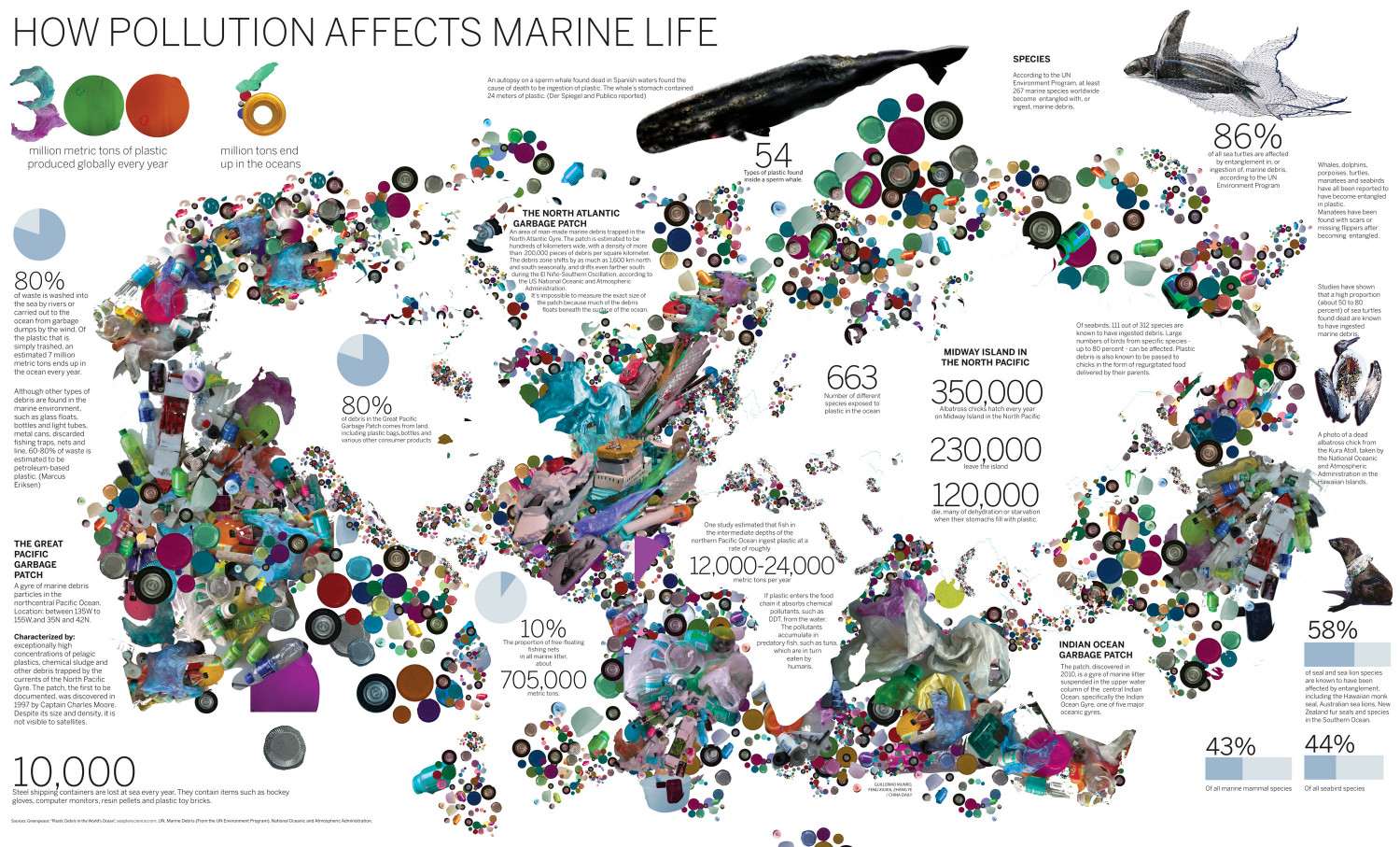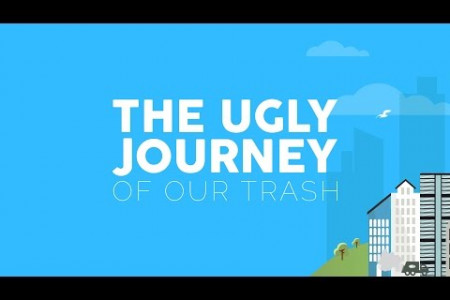
How Pollution Affects Marine Life
HOW POLLUTION AFFECTS MARINE LIFE SPECIES 300 6 An autopsy on a sperm whale found dead in Spanish waters found the cause of death to be ingestion of plastic. The whale's stomach contained 24 meters of plastic. (Der Spiegel and Publico reported) According to the UN Environment Program, at least 267 marine species worldwide become entangled with, or ingest, marine debris. 86% million metric tons of plastic produced globally every year 54 million tons end of all sea turtles are affected by entanglement in, or ingestion of, marine debris, according to the UN Environment Program up in the oceans Types of plastic found inside a sperm whale. Whales, dolphins, porpoises, turtles, manatees and seabirds have all been reported to have become entangled in plastic. Manatees have been THE NORTH ATLANTIC GARBAGE PATCH found with scars or missing flippers after becoming entangled. An area of man-made marine debris trapped in the North Atlantic Gyre. The patch is estimated to be hundreds of kilometers wide, with a density of more than 200,000 pieces of debris per square kilometer. The debris zone shifts by as much as 1,600 km north and south seasonally, and drifts even farther south during the El Niño-Southern Oscillation, according to the US National Oceanic and Atmospheric 80% Administration. Studies have shown of waste is washed into the sea by rivers or carried out to the that a high proportion (about 50 to 80 percent) of sea turtles found dead are known to have ingested It's impossible to measure the exact size of the patch because much of the debris floats beneath the surface of the ocean. ocean from garbage dumps by the wind. Of the plastic that is simply trashed, an estimated 7 million metric tons ends up in the ocean every year. Of seabirds, 111 out of 312 species are known to have ingested debris. Large numbers of birds from specific species - up to 80 percent - can be affected. Plastic debris is also known to be passed to chicks in the form of regurgitated food delivered by their parents. marine debris, MIDWAY ISLAND IN THE NORTH PACIFIC 663 350,000 Although other types of debris are found in the 80% Number of different species exposed to plastic in the ocean marine environment, such as glass floats, bottles and light tubes, of debris in the Great Pacific Garbage Patch comes from land, including plastic bags.bottles and various other consumer products Albatross chicks hatch every year on Midway Island in the North Pacific metal cans, discarded A photo of a dead albatross chick from 230,000 fishing traps, nets and line, 60-80% of waste is the Kura Atoll, taken by the National Oceanic and Atmospheric Administration in the estimated to be leave the island petroleum-based plastic. (Marcus Eriksen) Hawaiian Islands. 120,000 die, many of dehýdration or starvation when their stomachs fill with plastic. One study estimated that fish in the intermediate depths of the northern Pacific Ocean ingest plastic at a rate of roughly THE GREAT PACIFIC 12,000-24,000 GARBAGE PATCH metric tons per year A gyre of marine debris particles in the northcentral Pacific Ocean. Location: between 135W to 155W,and 35N and 42N. If plastic enters the food chain it absorbs chemical 10% pollutants, such as DDT, from the water. The pollutants accumulate in 58% Characterized by: exceptionally high concentrations of pelagic plastics, chemical sludge and other debris trapped by the The proportion of free-floating fishing nets in all marine litter, about predatory fish, such as tuna, which are in turn eaten by INDIAN OCEAN GARBAGE PATCH humans. The patch, discovered in 2010, is a gyre of marine litter suspended in the upper water column of the central Indian of seal and sea lion species are known to have been affected by entanglement, including the Hawaiian monk seal, Australian sea lions, New Zealand fur seals and species in the Southern Ocean. 705,000 currents of the North Pacific Gyre. The patch, the first to be documented, was discovered in 1997 by Captain Charles Moore. Despite its size and density, it is metric tons. Ocean, specifically the Indian Ocean Gyre, one of five major oceanic gyres. not visible to satellites. 43% 44% 10,000 GUILLERMO MUNRO, Of all marine mammal species Of all seabird species Steel shipping containers are lost at sea every year. They contain items such as hockey gloves, computer monitors, resin pellets and plastic toy bricks. FENG XIUXIA, ZHANG YE / CHINA DAILY Sources: Greenpeace: "Plastic Debris in the World's Ocean", seaplexscience.com, UN, Marine Debris (From the UN Environment Program), National Oceanic and Atmospheric Administration.
How Pollution Affects Marine Life
Source
Unknown. Add a sourceCategory
EnvironmentGet a Quote








